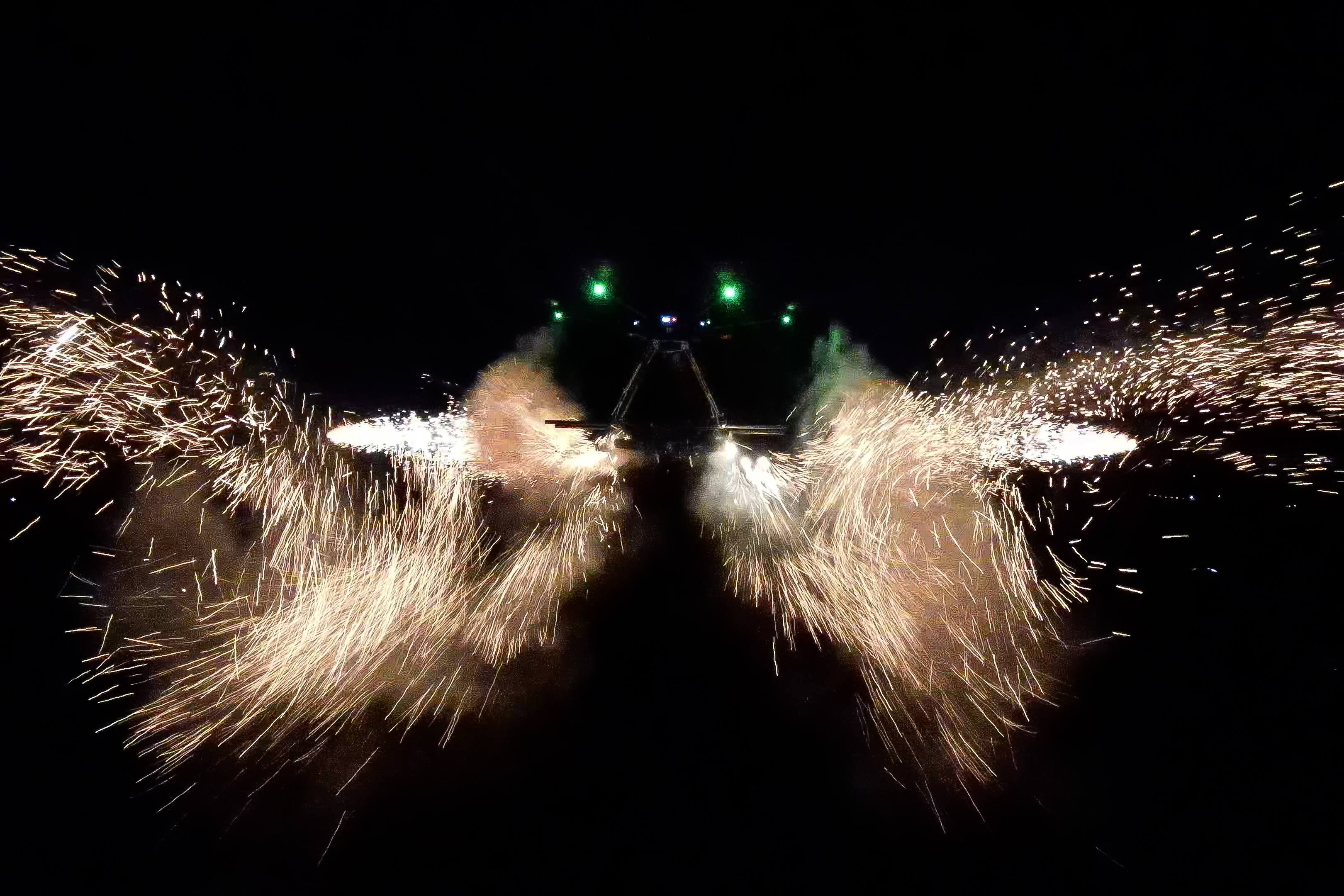
Garden City Display Fireworks is ready to create the perfect pyrotechnic spectacle for any event. They collaborated with the Unmanned and Remote Sensing Innovation Centre (URSIC), to combine pyrotechnics and RPAs and create a dynamic and innovative show.

Funded: Southern Ontario Network for Advanced Manufacturing Innovation (SONAMI)
Research Area: Unmanned and Remote Sensing
Research Team: Richard Borger, James Kretz, Tyler Sowden
Contributing Partner: Garden City Display Fireworks
Future Ready Challenge
Since the first modern fireworks display was set off in the 18th century, the pyrotechnics industry has been responsible for providing incredible displays of color and sound that thrill viewers of all ages.
Pyrotechnics have existed for centuries with very little change due to technology, but with the increasing popularity of drone light shows and the growing availability of Remotely Piloted Aircraft S (RPAs), the pyrotechnics industry is preparing to move into a new era, exploring how RPAs can engage an audience in new and exciting things.
R & D Collaboration
In March 2022, the Unmanned and Remote Sensing Innovation Centre (URSIC) at Mohawk College partnered with Beamsville, Ontario based Garden City Display Fireworks to investigate the possibilities of combining pyrotechnics and RPAs to create a dynamic and innovative show that would help Garden City Display Fireworks reach new business markets.
Innovative Results
Garden City Display Fireworks asked the URSIC team to test the possibility of firing pyrotechnics mounted to an RPA.
There were several significant problems to solve in pursuit of this goal, including addressing legal regulations and technical concerns. Since RPAs can be a form of transportation and would have pyrotechnics attached to them for this research, the team had to demonstrate that the tests were acceptable by the standards of the regulatory bodies in charge. To address the regulatory requirements, the URSIC team worked with the Explosive Regulatory Division (ERD), Transport Canada, and the Grimsby Fire Department to demonstrate that the tests would be safe.
With the approvals secured, the URSIC team developed a system to ensure that the drone would remain within the approved test area by creating three safeguards. Firstly, all flights were conducted within visual line of sight. Secondly, a parachute was attached to the DJI M600 Pro. This ensured the RPA was geofenced within the testing space, which would keep it within bounds during testing. If the RPA went out of bounds for any reason, it would shut down and deploy the parachute. Thirdly, the URSIC team added a failsafe to the parachute system by having a manual deployment option if the automatic geofenced area was compromised. Thus, the team was able to demonstrate full control over the RPA, and the pyrotechnics it carried, at all times.
The technical implications of firing an explosive charge from an RPA were also addressed by the applied research team. The technological challenges primarily concerned weight limitations – pyrotechnics have necessarily heavy components such as clay and heavy-duty cardboard which can quickly overwhelm the carrying capacity of even the largest RPAs. The URSIC team created a carbon fibre frame to carry the pyrotechnics and worked with COBRA firing systems to develop a custom, light weight firing system. The next stage involved testing the stability of the RPA under the stress of firing pyrotechnics. The team at URSIC fired increasingly larger pyrotechnic devices and were able to demonstrate that the RPA was able to maintain position with less than a 5 degree tilt upon firing.
With the regulatory and technological challenges solved, the team began significant testing during the day. The URSIC team monitored wind speed and direction throughout the tests and performed a series of maneuvers to assess the performance of the RPA and pyrotechnics. They adjusted the types of pyrotechnics involved to avoid any products containing compounds that could damage the RPA’s electronics systems.
After substantial testing to show the proof-of-concept for a RPA-mounted pyrotechnics show, the URSIC team performed a show at night to demonstrate the possibilities of using RPAs within pyrotechnics displays.
“Working with Mohawk College gave us an exciting glimpse into an entirely new way to engage our audiences,” Michael Bohonos President of Garden City Display Fireworks stated. “We look forward to working with the team as we continue to explore the possibilities of combining drones and pyrotechnics.”
Click here to watch how the URSIC team used RPAs used for this project.

